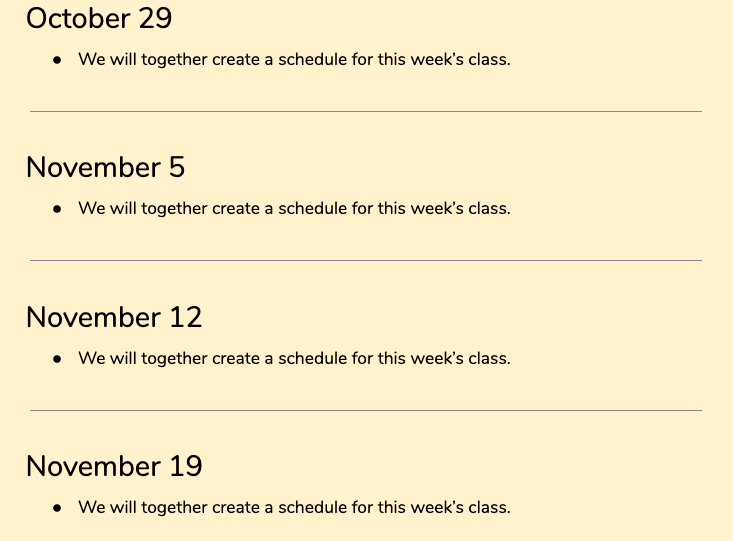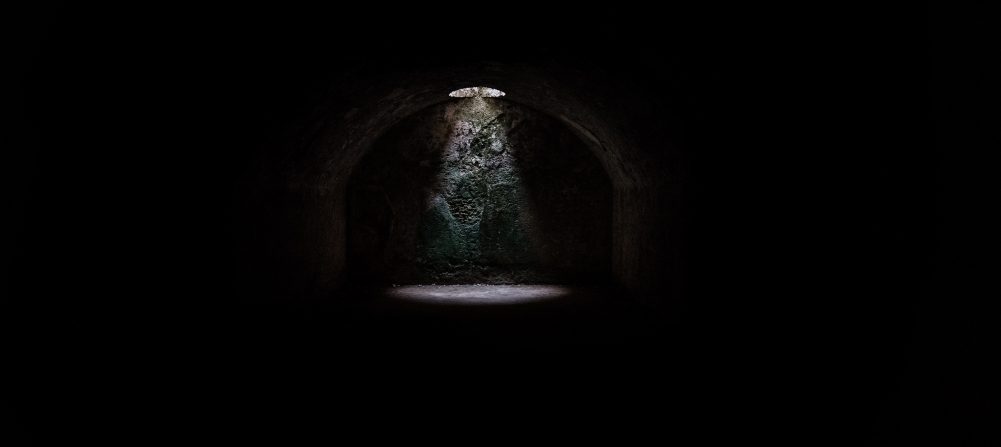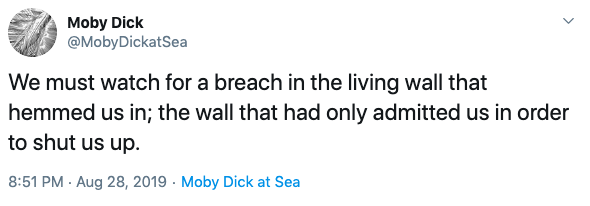Recently, I’ve been working with some faculty in thinking about Open Pedagogy, Open Education, and syllabi. There have been great, productive conversations, and lots of good questions. But as people have begun to head back to classes, there has also been a noticeable concern about realities versus ideals.
As I discuss syllabi with people, one of the things that comes up repeatedly is the many limitations any syllabus faces in reality. Syllabi are, my friend Liz Ahl pointed out, documents written for various audiences — audiences that need different things. Sometimes those things are in conflict. Syllabi are also documents subject to institutional regulations — and not just the regulations of the teacher’s own institution, but also, depending on the field, regulations of various accrediting agencies and other bodies. Syllabi may be used in the evaluation of transfer credit between institutions. Syllabi may have to be used in numerous sections of one course taught by various teachers. And so on.
Even the most progressive, radical, learner-centered teachers are unlikely to be completely free in how they create syllabi. Not because their progressive, radical, learner-centered pedagogy isn’t supported (though it may not be) but because of the many audiences that syllabi must reach.
Does this mean open pedagogies are impractical? Does it mean that the teacher who wants to institute more open practices is stuck?
I don’t think so. Because open isn’t static. It isn’t yes or no. Open is both a noun and a verb. The verb leads to openings. If we are committed to ideas of openness in our curricula, then our task is not to impose tools and techniques onto any one curriculum, nor to create a sea of similar-looking courses. Our task is to look for openings.
Here’s an example: In my job, I am encouraged to experiment and to push pedagogy as far to the edge as I can, and so I recently thought it might be good to make the schedule for my Introduction to Interdisciplinary Studies course this term one that the students would design with me. I would provide them only with the basic requirements and goals of the course, and then they would work together to determine the best way for us to implement those basic requirements and goals.
Sketching out the mechanisms for this, I soon realized it was not going to work. Or, rather, that it was not going to be particularly useful to my students to do this, and it might even, in fact, impede their progress. Because this course is where our students design their majors, and there are a bunch of steps in that process that pretty much have to be followed in one particular way. Further, if they fall behind, they run the risk of not being in good shape for registration for the next term. I could let them figure this out on their own through trial and error, but it seems reckless and even cruel to risk their progress and to deprive them of the guidance I can offer after having myself been through this process many times with many students. Further, whatever schedule and system they might create for the first 6 weeks or so of the course was almost certainly going to look very similar to what I could create and give to them, because the work that they are doing is for a specific process, and that process is what it is. I felt dishonest trying to create a system where they would, to be successful, have to come up with more or less what I would provide for them in a more traditional course. It felt like asking a lot of questions for which I already knew the answer but would pretend I didn’t.
So I went back to creating a set schedule and assignments for the course up through registration weeks. Then I found an opening.
Once the students’ Interdisciplinary Studies contracts are finished (or close to it), then the course shifts from this very practical work to more theoretical — we begin exploring what it means to be an interdisciplinarian. I’ve changed this part up every term I’ve taught it and I’ve never been particularly happy with it. I’ve got some good materials, but after the students finish their contracts, their investment in the course is much lower, because they’ve gotten most of what they wanted from it. This seemed to me a perfect spot to open up the syllabus.

Thus, for six weeks in the second half of the term, right now my course schedule just says, again and again, “We will together create a schedule for this week’s class.” As we move closer to that first undefined week, what the schedule says will change, because the students will help define what we do each week.
As much as I want to conceive an educational utopia where the principles of Open Pedagogy triumph, where generous thinking is the norm and learning is celebrated with joy — and as much as I think a general commitment to Openness is the best path forward for education — I tend toward pragmatism. What can we accomplish in the here and now, given present circumstances and realities?
Openness is at least as much an ethos as it is a toolbox. I find myself reaching for the vocabulary of Gilles Deleuze & Félix Guattari: there is not openness so much as a becoming-open. A potential — one that is, perhaps, infinite, and is certainly unpredictable, contingent, and not linear but rhizomatic.
While it would be nice to revolutionize the world, it’s important to recognize that small changes can matter a lot. You don’t have to blow up your whole curriculum (at least, not all at once).
Instead, find the openings.
Main image by Jez Timms on Unsplash

Thanks for this reflection, Matt. What you say makes sense to me. The idea of looking for openings resonates with me. This sounds a lot like what my teaching days are like. Usually I have a plan for each class written on the board so that students don’t need to guess about what’s ahead. That said, they frequently have other ideas about what we could do, what some would rather do. My role as facilitator of learning is to reach decisions which best meet the needs of the students in front of me. At times it will mean leaving our regularly scheduled programming to try an alternative. On other occasions, it will mean sticking to the plan which allows us to focus on a longer term goal. Either way, openings present themselves regularly. The question for me remains, how willing and ready am I to acknowledge, use and celebrate those openings to benefit student agency, autonomy and growth.